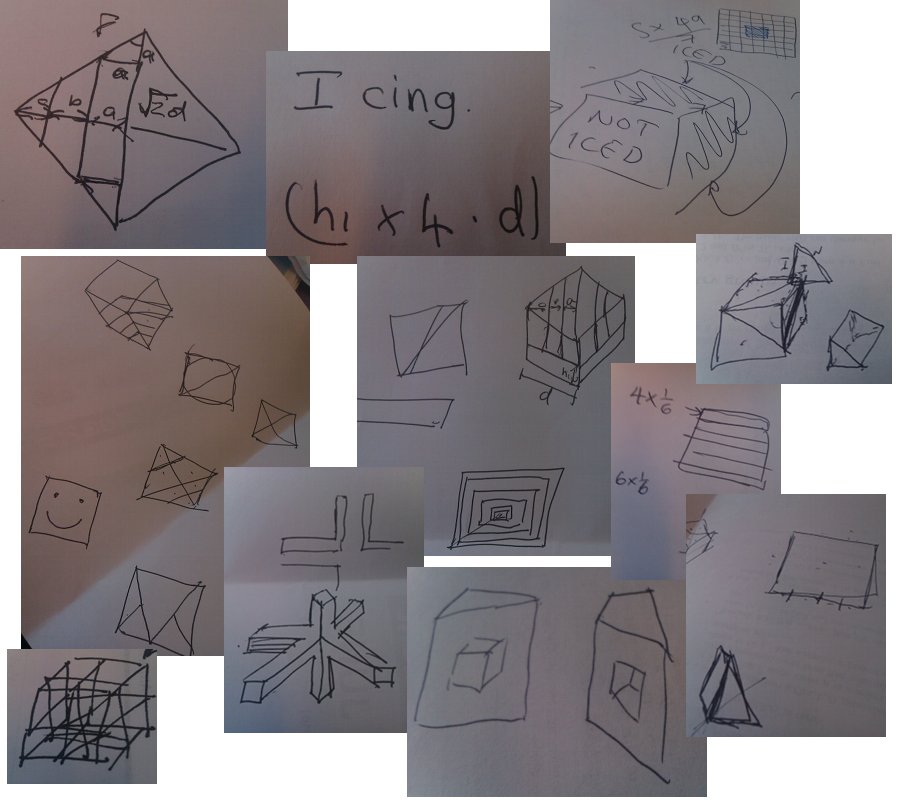Having been absent from the May MathsJam, I have been promised a writeup by Manchester MathsJam regular and sometime Aperiodical article-writer Andrew Taylor. This has not yet arrived, and in the interests of making things as temporally confusing as possible, I’m going to post the June writeup now and let that one happen whenever it happens.
June’s MathsJam coincided with one of England’s games in the Euro Football Time 2012 Soccer Cup, or whatever it’s called, but luckily the pub we use for our MathsJams is one of the few locations in Manchester not showing the game, and instead we were treated to some live jazz from the other room.
The turnout was excellent – despite being down a couple of regulars, we had three or four new faces, and hopefully some of them will come again. A couple of them were in IT, which is a classic MathsJam occupation, and we now have two A-level students attending (who were of course better than those of us with PhDs at any actual calculations needed).
We kicked off (ha look – I made a football joke!) with some games, including Pylos (from the makers of Quarto, a MathsJam favourite) and a large game of SET, like some kind of scary induction for new people. They all managed to bag at least a couple of SETs!
I brought my Pringles (sorry, Generic Crisp Tube) enigma machine, which caused great amusement and despite there being alleged Pringlenigmas at Newcastle, Leeds and Milton Keynes Jams, we didn’t get sent any secret messages to decode (which is probably fine, because it’s secretly a faff to use). We also had some code breaking activities which I’d picked up from the GCHQ stall at Cheltenham Science Festival, but they were designed for kids and hence laughably easy, so we used them to fill time and once we’d worked out the cipher we stopped decoding (like real mathematicians). Also, three of the sentences to decode started with the words “Alan Turing” and one with “Bletchley Park”, which made it pretty obvious what was going on.
We spent much of the rest of the night solving puzzles set by other MathsJams – starting with this old chestnut: If I have 11 identical weights, and a balance, and one of the weights is secretly a bit heavier than all the others, can I work out which one in 3 weighings? We quickly concluded that yes you can, and described how, and then found an upper limit on how many weights you could have to start with and still only need three weighings, and then a general formula for n weighings, and then decided we needed something meatier.
The theme of the evening was apparently cake-based puzzles, and the following two popped up on Twitter:
EDI: Cakes of diameter 6″, 12″, 18″. Using 1 cut, split cakes between 2 ppl so each gets an equal share.
— Maths Jam (@MathsJam) June 19, 2012
LON: You have a cube cake, iced on five sides. Can you cut it into seven pieces, all with equal volume of cake & area of icing? #MathsPuzzle
— Maths Jam (@MathsJam) June 19, 2012
(Henceforth these shall be referred to as the round cakes puzzle, and the cube cake puzzle).
For the round cakes puzzle, we decided it was pretty clear that you could for example stack all three cakes on top of each other in a concentric pattern like a wedding cake and cut down the centre. We decided that this was too easy, and the puzzle must intend that you take physical problems into account – how do you stack cakes exactly in the middle of each other? How do you make sure your cut goes exactly through the centre? – and that no cake-protractors or cake-pairs-of-compasses were available.. Paul walked by and casually pointed out a way to arrange the cakes which solves this, and then we realised that was the solution to the puzzle as set. We demanded more puzzle, and were rewarded with stage 2:
EDI to NEW: ok, now use 2 cuts but one person can’t eat from 6″ cake and other one can’t eat from 12″ cake.
— Maths Jam (@MathsJam) June 19, 2012
This took a little more thinking, but using Paul’s original solution, two other people’s ideas and my checking skills, and quite a lot of saying circumference when we meant diameter and vice versa, we got to an answer. If you’d like more detail, let me know (katie@aperiodical.com) and I might even write it up because I reckon it’s quite nice.
At this point, as an interlude, I posed Sam Loyd’s Archery Puzzle. While at Cheltenham, I’d attended a workshop which taught us a nice little programming language called MiniZinc – it’s a constraint satisfaction language, which means you define variables, set constraints and hit go and it will give you a solution. This means it can be used for anything from solving Sudoku to timetabling a university, and we were using it to solve puzzles like Alphanumerics and the aforementioned Archery puzzle. It can be seen here, and we did it as a kind of speed challenge (won of course by one of our A-level students).
As for cube cakes, I’ll add below a selection of scribbles we came up with, none of which really led us to an answer, and by the end of the evening we’d given up and I rang Matt at London MathsJam to get an answer. We were given two answers, one of which had been given to Matt with the puzzle, which we all thought was a bit rubbish, and one which Matt had worked out himself, which we all agreed was lovely.
Please, no solution spoilers in the comments but feel free to discuss how these things all went down at the other Jams!
